

"To make himself heard, man no longer depended on the volume of his voice. With the alphabet he could be heard from one continent to another, from yesterday to tomorrow. He could reach people distant in space and in time. Without uttering a sound-in silence-his thoughts could be heard all over the world at the same time."
-Mario Montessori quoting his motherWhen the child arrives in the Montessori classrooms, he has fully absorbed his culture’s language. He has already constructed the spoken language and with his entry into the classroom, he will begin to consolidate the spoken language and learn the other languages spoken inside the classroom and then begin to explore the written forms of those languages.
In Senthil Public School, children go through English, Tamil and Hindi. Montessori language materials are designed primarily to teach children the intricacies of written and spoken language. A firm grasp of writing and speaking will allow students to progress with their learning. Students use language materials to explore letters, sounds, handwriting, and eventually spelling and writing. We follow the following steps for the three languages.
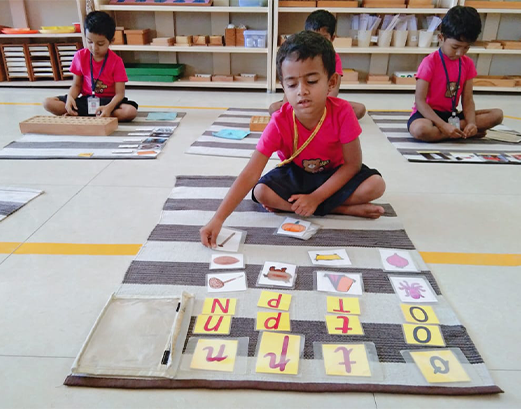
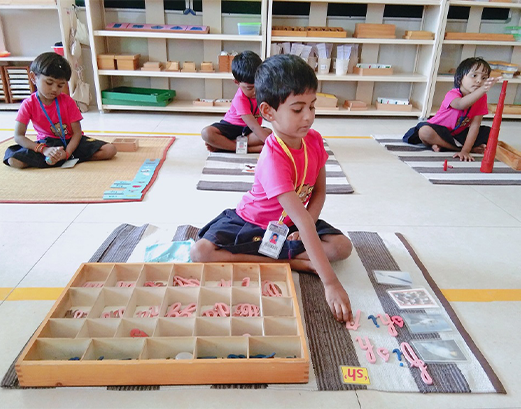
There are many ways the adult can facilitate the acquisition of verbal language, but we cannot directly teach it. Instead, we prepare the environment. We naturally focus on offering the child rich oral language experiences. This is essential yet there is other work we do that is as critical, if not more so. We must adjust the child's environment, both physical and navigable (e.g., daily routines, human interactions) so that it does not in any way block the expression of human tendencies. We trust that given the right environment, and the right support structure, the child is inherently capable of developing a strong, logical, ordered, and gracious voice. So, much of the work we do in this area occurs naturally through human relationships. There are also many explicit lessons we offer. We also profoundly influence the child by offering them an organized and accessible environment.
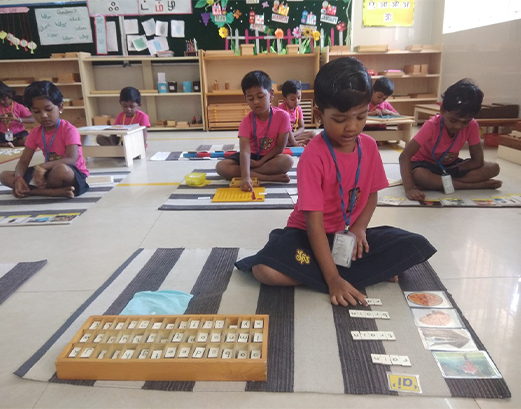
The Montessori approach teaches language both in the phonetics method and in the traditional conventional method, but it teaches phonetics first. Why? Because 50% of the English language is phonetic and Tamil and Hindi are purely phonetic languages. It follows predictable rules...and children love rules. They are drawn to find logic and order within our world.
The human tendencies for order and precision are very strong in the young child and the phonetic half of English is compliant in this respect. It is systematic and predictable. There are rules that, when followed, hold the key to cracking the code of English.
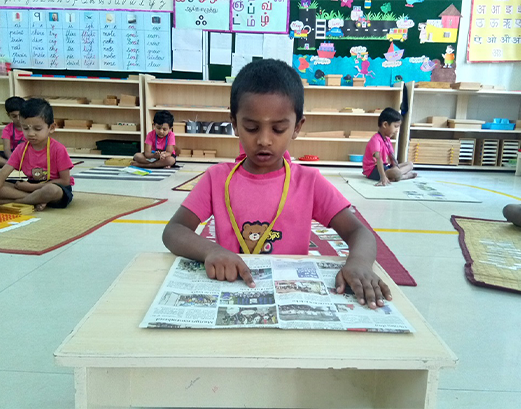
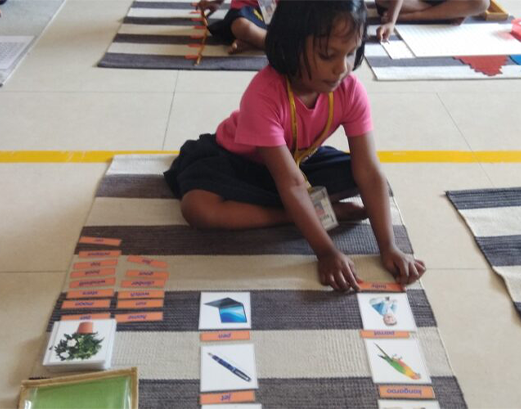
Traditionally when we think of writing, we think of putting pen to paper. But there is more to it than this. Before one can have success with writing by way of the hand, one must be able to build words in the mind. This is the intellectual component of writing. It refers to the ability to put letters together to create a word. It can be done even if one has no muscular control of the hands. As such, this intellectual component of writing may develop even before the hand is able to hold a pencil.
Our first work in aiding the young child to master writing is to prepare the mind for the work of writing. So, what does that entail? What are the intellectual requirements for writing? In order to create words in the mind, the child needs:
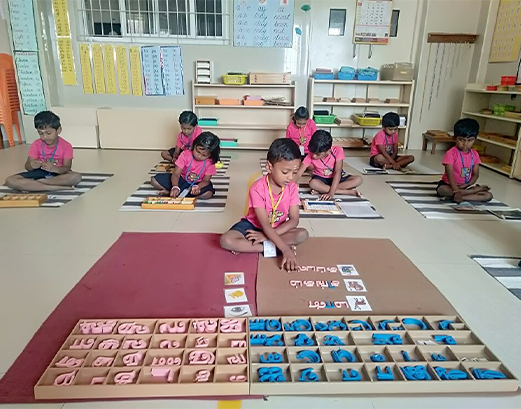
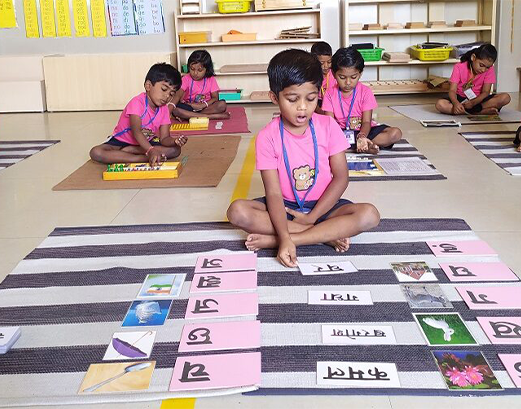
At some point, when the child’s needs for verbal language, phonetic awareness, and writing have been met, there is a magical event. The child reads his first word. Just as we cannot make an infant take his first steps, this discovery is not something we as adults can make happen. It will occur on its own timetable and for reasons that will remain mysterious. We can only prepare the child to make the discovery.
Once this preparation is complete, we continue to find exciting ways to engage them in the language work while we wait. And while we wait, we trust that she/he will spontaneously begin to read. This can happen as young as age 3 or as late as age 8. For most children who have been prepared as outlined here, reading begins between the ages of 4 and 6.
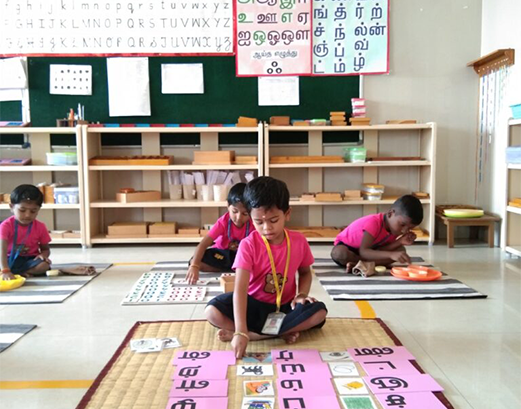
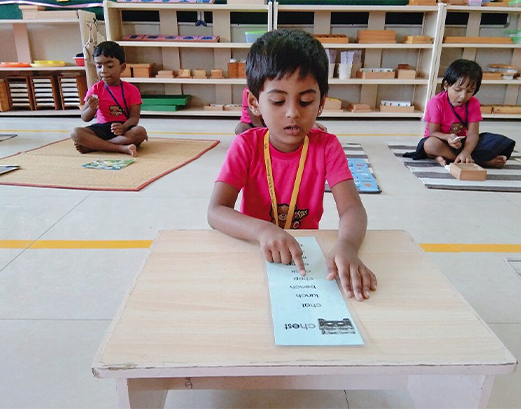
Once they read their first words, they generally don't want to stop reading! We continue to guard their growing self-confidence by giving them more and more phonetic words to read. Then we slowly branch out into phonetic words that include phonograms/digraphs. At the same time, we introduce them to high-frequency "sight(puzzle) words." These are words that don't follow the rules and must be memorized (words like you, as, were, though). We follow the pace of the child as we slowly branch out to non-phonetic words and then first-reader books. All the while we find ways to encourage and inspire the child to write, to practice using the growing dictionary of words they can read.
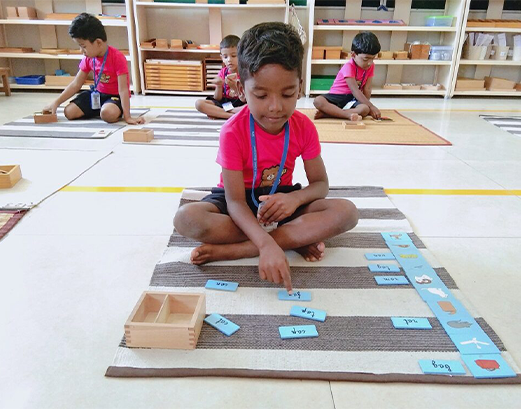
As the child gains confidence with individual words, we slowly branch out to phrases. We use short phrases to isolate each part of speech and present it in a clear, repeatable, interesting lesson. Of course, we don't need to present a specific lesson on nouns as most of the child's reading work thus far is dealing exclusively with nouns. We move on to the article, then the adjective, the conjunction, the preposition, the verb, and the adverb. All these lessons use phrases to ease the child into the more complex aspects of reading analysis.
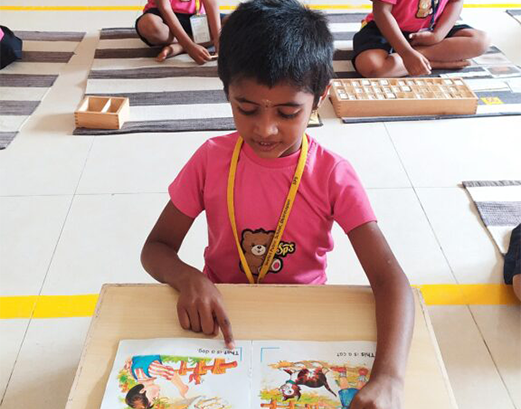
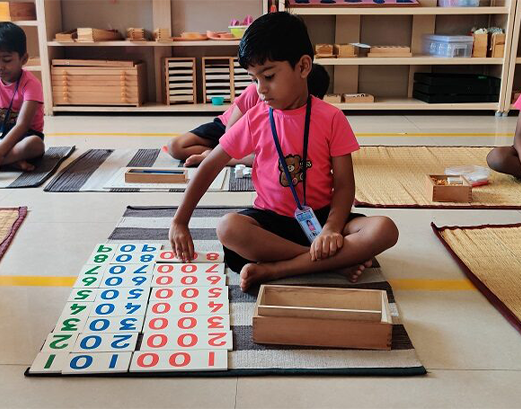
All this work we are doing with children as young as age 5... and we are not requiring it or assigning it. It is work that is freely chosen by the children because the work is specifically designed to call to them. It is terribly interesting! When we have lain the proper foundation, children become free to hear the voice inside them that calls out for knowledge. If our learning environments are prepared, the children can immediately and directly heed this call before it fades into a whisper.
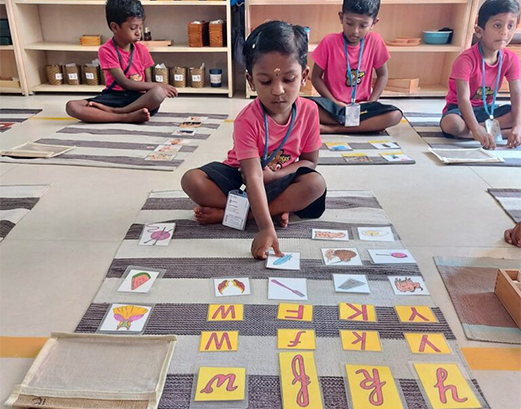
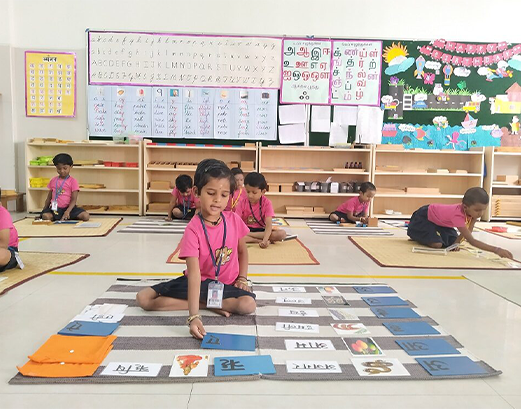
Our intention with all this work is to help children become masters of the spoken and written word, to realize what Dr. Montessori called Total Reading. We want children not only to be able to read and understand the words of others, but to realize their own voice, to trust in it, and to measure everything else against it. This is a much loftier goal than teaching a child to work with the mechanics of letters and phrases. This is work of developing the child's full potential... and of realizing our own along the way.
As the child leaves the Montessori classroom after the age of five and a half, he will become an articulate person, being able to communicate his feelings in well-formed sentences and in writing. He will be able to write these thoughts and feelings in skilful handwriting. The child will have total reading and a sense of the home language at a level where he will be the master of his words.
2023 senthil public school dharmapuri. all rights reserved. designed by aatmia.